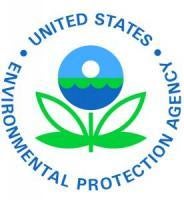WASHINGTON – Today, the U.S. Environmental Protection Agency (EPA) announced that in Fiscal Year (FY) 2018, the Agency deleted all or part of 22 sites from Superfund’s National Priorities List (NPL), the largest number of deletions in one year since FY 2005 and a significant increase over the past few years.
“Under President Trump, EPA is deleting Superfund sites from the National Priorities List at the fastest pace in more than a decade,” said EPA Acting Administrator Andrew Wheeler. “This remarkable accomplishment is proof that cleaning up contaminated lands and returning them to safe and productive use is a top priority of the Trump EPA.”
Under the Trump Administration, the Superfund program has reemerged as a priority to fulfill and strengthen the Agency’s core mission of protecting human health and the environment. In May 2017, EPA launched the Superfund Task Force to provide recommendations for improving and expediting site cleanups and promoting redevelopment.
Site deletions have been a major focus of the Superfund Task Force. The Task Force reviewed existing policies and procedures related to deleting sites from the NPL and issued several recommendations. In addition, the Superfund program began providing the EPA administrator’s office with monthly updates on upcoming deletions. Through these and other actions, EPA deleted 18 sites and portions of four more sites in FY 2018, a significant increase over the three full or partial deletions in FY 2016.
Another significant Task Force achievement in FY 2018 was increasing the annual number of sites returned to communities for redevelopment. By redeveloping Superfund sites, communities are able to reuse thousands of acres of formerly contaminated land, often strengthening local economies. Many sites that EPA has designated as ready for reuse in previous years now host parks, business districts, renewable energy facilities, wildlife habitat, neighborhoods, and farms. In FY 2018, EPA committed to increase the number of NPL sites that achieved sitewide ready for anticipated use (SWRAU) by roughly 25 percent over the previous year. Through focused management attention and improved program practices, EPA achieved this goal: 51 sites reached SWRAU in FY 2018, the highest total since FY 2013.
The 18 sites EPA completely deleted from the NPL are:
- C & D Recycling in Foster Township, Pennsylvania;
- Davenport and Flagstaff Smelters in Sandy, Utah;
- Davis Timber Company in Hattiesburg, Mississippi;
- Dorney Road Landfill in Upper Macungie Township, Pennsylvania;
- Eureka Mills in Eureka, Utah;
- Frontier Hard Chrome, Inc. in Vancouver, Washington;
- Fulton Terminals in Fulton, New York;
- Hatheway & Patterson in Mansfield, Massachusetts;
- Nutting Truck & Caster Co. in Faribault, Minnesota;
- Old Esco Manufacturing in Greenville, Texas;
- Old Southington Landfill in Southington, Connecticut;
- Ordnance Works Disposal Areas in Morgantown, West Virginia;
- Reasor Chemical Company in Castle Hayne, North Carolina;
- Recticon/Allied Steel Corp. in East Coventry Township, Pennsylvania;
- Union Chemical Co., Inc. in South Hope, Maine;
- Vancouver Water Station #1 Contamination in Vancouver, Washington;
- Vancouver Water Station #4 Contamination in Vancouver, Washington; and
- Whitehouse Oil Pits in Whitehouse, Florida.
The four sites EPA partially deleted are:
- Naval Industrial Reserve Ordnance Plant in Fridley, Minnesota;
- Omaha Lead in Omaha, Nebraska;
- Pacific Coast Pipe Lines in Fillmore, California; and
- Peters Cartridge Factory in Kings Mills, Ohio.
Background
The NPL includes the nation’s most serious hazardous waste sites. The list serves as the basis for prioritizing EPA Superfund cleanup funding and enforcement actions. EPA deletes sites from the NPL when no further cleanup is required to protect human health or the environment.
One of EPA’s goals for the Superfund program is to return sites to communities for productive use. EPA encourages site reuse throughout the cleanup process, as appropriate, to maximize redevelopment opportunities. Superfund deletions can aid redevelopment efforts by offering a clear signal to developers and financial institutions that Superfund cleanup is complete.
In coming years, EPA will continue its focus on deleting sites through training and sharing information about the most effective approaches for moving sites to deletion.
EPA is scheduled to conclude implementing the Superfund Task Force recommendations in 20.
The original press release is available here.




 />i
/>i

